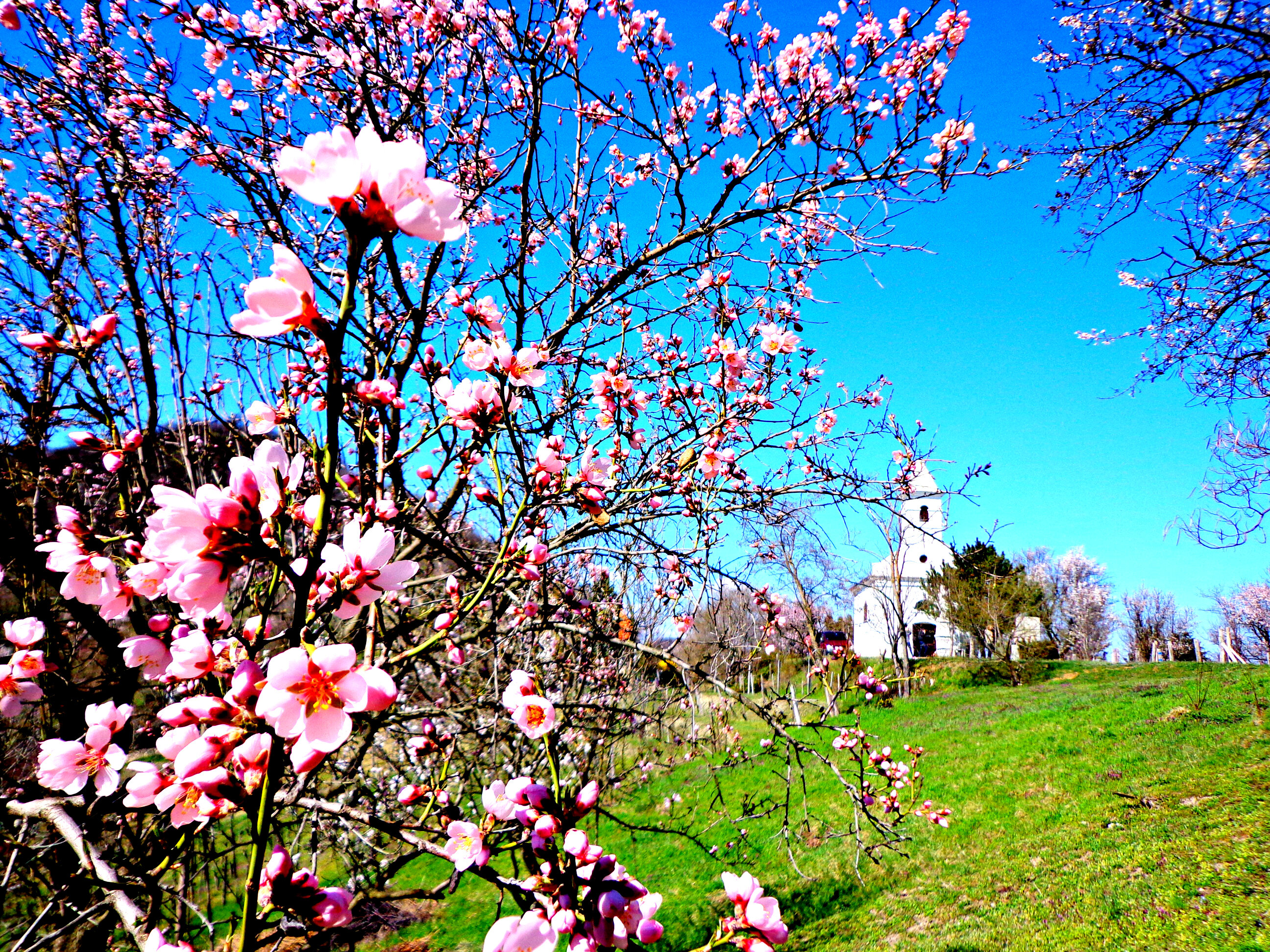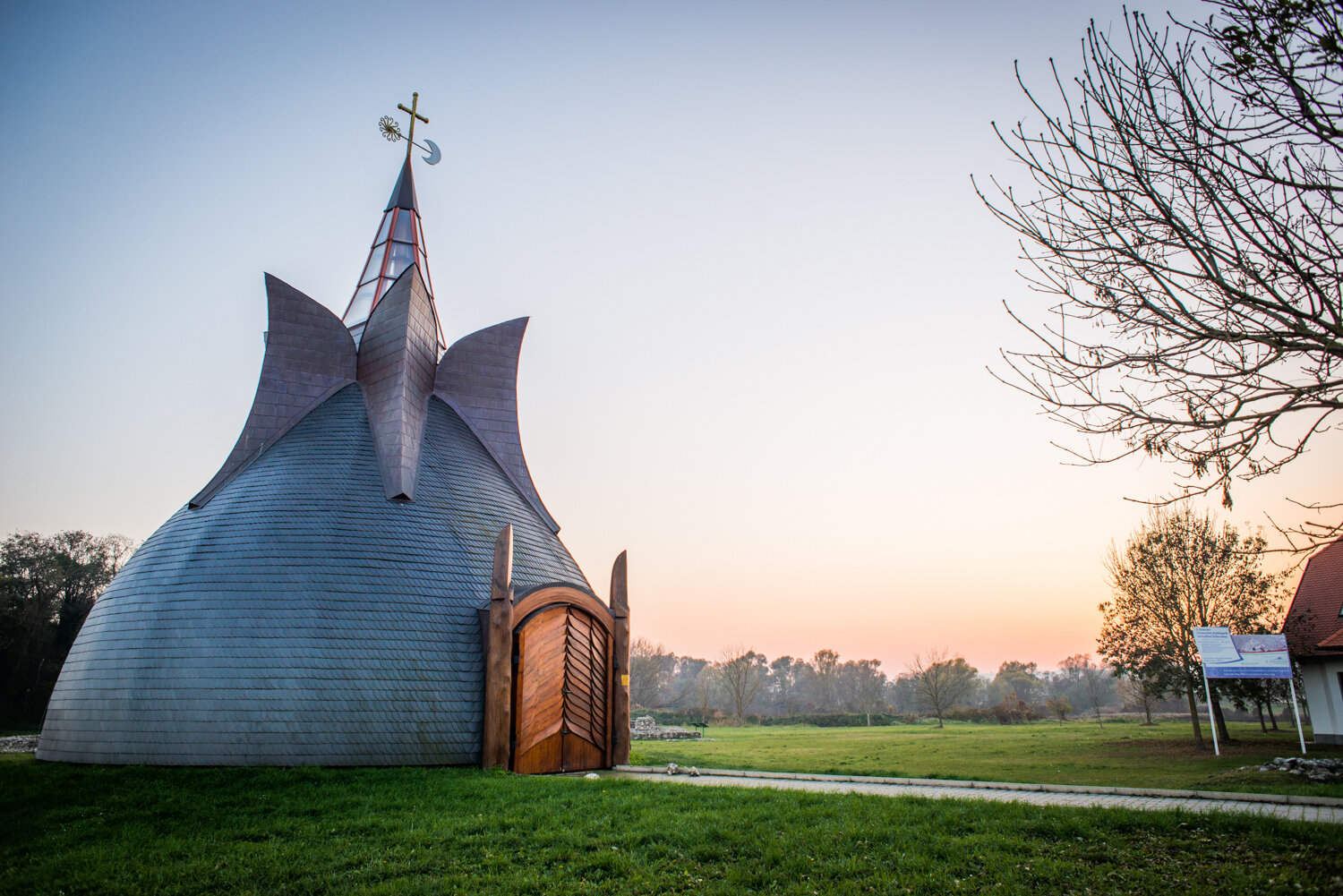Bearded artists, disco dancing Socialist youth, legends and fantasy--chapels to visit at Balaton.
Chapels. Religious places, tourist attractions, usually closed. Standing far from residential areas, in neglected, shrubby spots. Parts: a tiny tower, a chancel (the size of a small room), weird angel statuettes by third-class hobby sculptors.
If the chapels around Balaton were nothing but the above, it would have been unnecessary to write an article about them. Then again, where else would you see a saint's day procession with cars, an underground place of pilgrimage or a flipflop mass? We collected chapels that are worth a visit for more than their surroundings.
2/7
The Legend of Ice Fishers – St. Michael's Chapel, Vonyarcvashegy
News of fisherman rowing on ice floes only appear in Russian tabloids nowadays. But the Szent Mihály-chapel near Vonyarcvashegy owes its existence to such fishermen, according to the legend. The chapel that stands on a hilltop between Vonyarcvashegy and Balatongyörök was raised as a token of gratitude for thelucky escape of fishermen floating on the icy Lake Balaton. Although wet blanket researchers claim that the chapel was already standing at the time of the supposed escape (mid-1700s), the legend cannot be erased. One should visit the Szent Mihály-chapel for its scenic environment as well. The Balatoni Bike Ring passes at the feet of the hill, so you will surely find it.
A saint's day car procession is something like a drive-in movie, with the difference of looking at a priest instead of the screen--and receiving a blessing to save you from crashes. The St. Cristopher's Day (25 July) car processions are but one of the attractions of the Szent Kristóf-chapel in Szántódpuszta. The adjoining listed building complex of the Szántódpuszta Manor is worth a visit at other times as well, for its various event, horse shows or the Pannónia Festival at Pentecost.
4/7
The Árpád-Dynasty and the Star Wars – Vársziget, Zalavár
Each and every nation that have happened to cross Hungary since Roman times have settled in Zalavár, the southwestern corner of Balaton. Small wonder that tourists regularly bump into Frankish, Slavic, Arpadian or Turkish ruins or the archaeologists who have been excavating these for decades. In the centre of the historical area, on teh Vársziget (Castle Island), aHistorical Memorial Park was opened to offer insight into the eventful centuries. The Arpadian Age church that once stood here was also rebuilt, and they also added another religious building by Imre Makovecz that would befit a fantasy movie.
6/7
Give peace a chance – Kiskápolna, Szigliget
One of the most peaceful places at Lake Balaton is the Rókarántó domb. Of course you will also find a chapel here, none other than the Holy Trinity Chapel, referred to as Kiskápolna (Small Chapel) by the locals. In harmony with the spirit of the place, the snow white building also stands for peace. Its wonderful location was almost its doom in World War 2, when the ytried bombing it, but the building survived. Today, the monuments standing in front of it bear remembrance to the fallen soldiers of both sides of the war. The cross by the entrance commemorates the soldiers from Szigliget who died in the war, while a plaque preserves the memory of the crew of an American bomber that crashed nearby.








